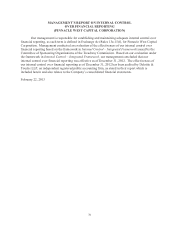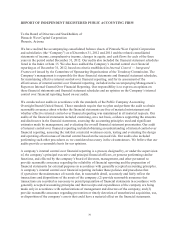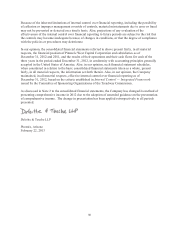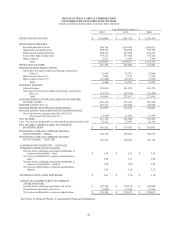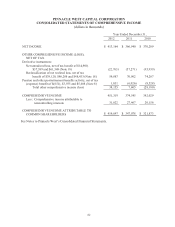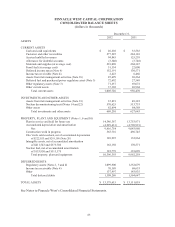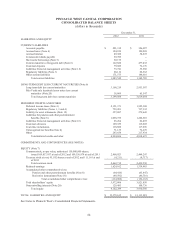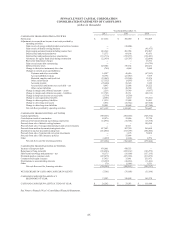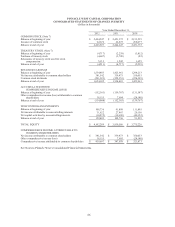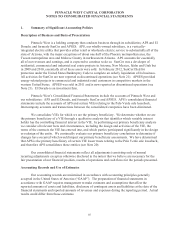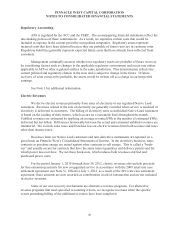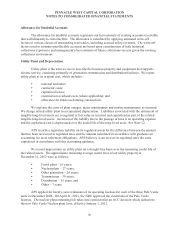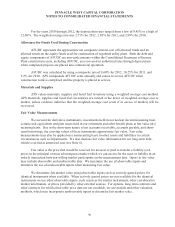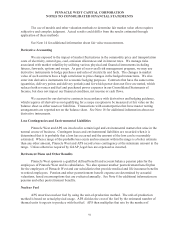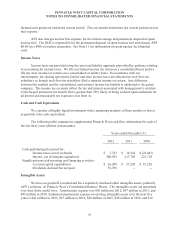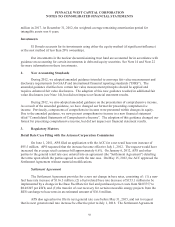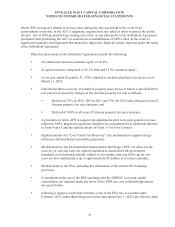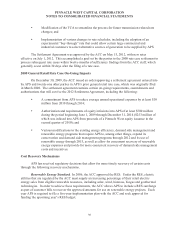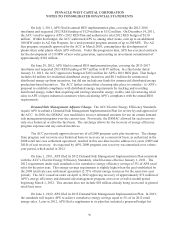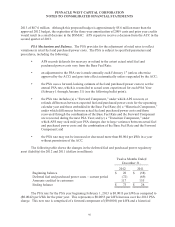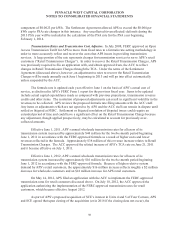APS 2012 Annual Report Download - page 113
Download and view the complete annual report
Please find page 113 of the 2012 APS annual report below. You can navigate through the pages in the report by either clicking on the pages listed below, or by using the keyword search tool below to find specific information within the annual report.PINNACLE WEST CAPITAL CORPORATION
NOTES TO CONSOLIDATED FINANCIAL STATEMENTS
88
Regulatory Accounting
APS is regulated by the ACC and the FERC. The accompanying financial statements reflect the
rate-making policies of these commissions. As a result, we capitalize certain costs that would be
included as expense in the current period by unregulated companies. Regulatory assets represent
incurred costs that have been deferred because they are probable of future recovery in customer rates.
Regulatory liabilities generally represent expected future costs that have already been collected from
customers.
Management continually assesses whether our regulatory assets are probable of future recovery
by considering factors such as changes in the applicable regulatory environment and recent rate orders
applicable to APS or other regulated entities in the same jurisdiction. This determination reflects the
current political and regulatory climate in the state and is subject to change in the future. If future
recovery of costs ceases to be probable, the assets would be written off as a charge in current period
earnings.
See Note 3 for additional information.
Electric Revenues
We derive electric revenues primarily from sales of electricity to our regulated Native Load
customers. Revenues related to the sale of electricity are generally recorded when service is rendered or
electricity is delivered to customers. The billing of electricity sales to individual Native Load customers
is based on the reading of their meters, which occurs on a systematic basis throughout the month.
Unbilled revenues are estimated by applying an average revenue/kWh to the number of estimated kWhs
delivered but not billed. Differences historically between the actual and estimated unbilled revenues are
immaterial. We exclude sales taxes and franchise fees on electric revenues from both revenue and taxes
other than income taxes.
Revenues from our Native Load customers and non-derivative instruments are reported on a
gross basis on Pinnacle West’s Consolidated Statements of Income. In the electricity business, some
contracts to purchase energy are netted against other contracts to sell energy. This is called a “book-
out” and usually occurs for contracts that have the same terms (quantities and delivery points) and for
which power does not flow. We net these book-outs, which reduces both revenues and fuel and
purchased power costs.
For the period January 1, 2010 through June 30, 2012, electric revenues also include proceeds
for line extension payments for new or upgraded service in accordance with the 2009 retail rate case
settlement agreement (see Note 3). Effective July 1, 2012, as a result of the 2011 rate case settlement
agreement, these amounts are now recorded as contributions in aid of construction and are not included
in electric revenues.
Some of our cost recovery mechanisms are alternative revenue programs. For alternative
revenue programs that meet specified accounting criteria, we recognize revenues when the specific
events permitting billing of the additional revenues have been completed.


